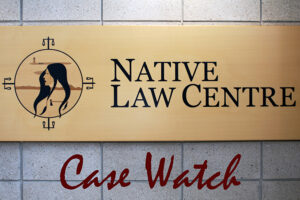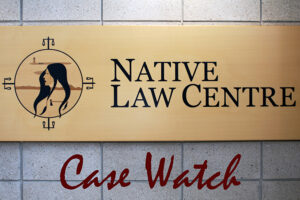This document provides a summary of the Attorney General of Canada’s Directive on Civil Litigation Involving Indigenous Peoples (the Directive).
The Directive was written by Jody Wilson-Raybould, the former Attorney General of Canada, in response to her mandate letter from Prime Minister Justin Trudeau. It outlines a series of litigation guidelines instructing Crown counsel as to how the Principles Respecting the Government of Canada’s Relationship with Indigenous Peoples (the Principles) must be applied in civil litigation involving Indigenous peoples.
The former Attorney General articulates that the guidelines are intended to reflect a significant shift in Crown-Indigenous relations. In particular, the Directive recognizes the limited ability of litigation to achieve the sort of reconciliation and renewal required in Crown-Indigenous relationships. The former Attorney General recognized that Indigenous peoples are entitled to select their own forum to resolve legal issues while also reiterating that where litigation is important, the guidelines should direct the Government’s positions and strategies.
The former Attorney General went on to outline that the Directive applies to section 35 of the Constitution Act, 1982, which entrenches Aboriginal and Treaty rights, as well as other Crown obligations towards Indigenous peoples. It is intended to animate the advice provided by departments and Cabinet towards the goal of reconciliation with Indigenous peoples, which is the fundamental purpose of section 35 of the Constitution. Importantly, the Directive indicates that the honour of the Crown is reflected not just in the substance of positions taken by the Crown in litigation, but also in how those positions are expressed. This broader goal is grounded in four main objectives: (1) advancing reconciliation; (2) recognizing rights; (3) upholding the honour of the Crown; and (4) respecting and advancing Indigenous self-determination and self-governance.
The Litigation Guidelines are as follows:
Litigation Guideline #1 – Counsel must understand the Principles and apply them throughout a file’s lifespan.
Counsel must seek to understand and apply Indigenous perspectives, recognizing the diversity of Indigenous perspectives and the rights underlying these varied relationships.
Litigation Guideline #2 – Litigation strategy must reflect a whole-of-government approach.
Principle 3 requires the Government to act with honour, integrity, good faith and fairness in all dealings with Indigenous peoples. To this end, counsel must endeavour to engage in discussions between Indigenous peoples and the departments and agencies about the way in which litigation might affect their relationship. This guideline calls for litigation strategies that are firmly rooted in the policies of the Crown and advocates awareness of government-wide implications of judicial decisions or settlements. This will necessitate broad consultation from government actors.
Litigation Guideline #3 – Early and continuous engagement with legal services counsel and client departments is necessary to seek to avoid litigation.
In order for conflict and litigation to become the exception and not the rule, counsel must engage with client departments and agencies as soon as they become aware of a conflict that may result in litigation, and endeavour to develop coordinated approaches that aim to resolve disputes without litigation.
Litigation Guideline #4: Counsel should vigorously pursue all appropriate forms of resolution throughout the litigation process.
The primary goal of counsel must be to resolve issues, using the court process as a forum of last resort. Forms of resolution such as alternative dispute resolution processes (such as negotiations and mediations) must be considered including the invocation of Indigenous legal traditions or other traditional Indigenous approaches. Consideration must also be given to creative solutions with other department counsel and other government departments or agencies.
Litigation Guideline #5: Recognizing Aboriginal rights advances reconciliation.
This guideline recognizes that the Principles necessitate a change in the interpretation and governing of Aboriginal rights. It specifically points to Principles 1 and 2, which call on the Government of Canada to ensure its dealing with Indigenous peoples are based on the recognition and implementation of the right to self-determination and state that reconciliation requires hard work, changes in perspectives and action, compromise, and good faith. It also specifically points to the need to recognize Aboriginal rights, including Aboriginal title, wherever these can be recognized. Litigation counsel is advised to avoid taking positions or adding parties to litigation that undermine the ability of Indigenous groups to resolve disputes amongst themselves.
Litigation Guideline #6: Positions must be thoroughly vetted, and counsel should not advise client departments and agencies to pursue weak legal positions.
Counsel should resolve differences of opinion on available arguments and the strength of legal positions through discussion. Where discussion fails, consultation and approval must be done in an appropriate manner.
Litigation Guideline #7: Counsel must seek to simplify and expedite the litigation as much as possible.
Counsel must ensure that litigation is dealt with promptly and consider resource imbalances between parties.
Litigation Guideline #8: All communication and submissions must be regarded as an important tool for pursuing reconciliation.
This guideline emphasizes the role of written and oral submissions as an instrument of communication between the parties, the Attorney General, Indigenous peoples, the judicial system and the public. In these pleadings, efforts must be made to advance reconciliation through the application of the Principles.
Litigation Guideline #9: Counsel must use respectful and clear language in their written work.
The Attorney General is expected to be a model litigant, upholding the expectation and maintaining high standards of civility and advocacy in their communication with the courts, Indigenous peoples or their counsel.
Litigation Guideline #10: Legal terminology must be consistent with constitutional and statutory language.
Counsel should abide by the specific terms used in the Constitution, by Parliament, and by the legislatures relating to Indigenous peoples, including the term Aboriginal as defined by section 35 of the Constitution Act, 1982, the term “Indian” as it appears in subsection 91(24) of the Constitution Act, 1867, and the term First Nation in reference to the First Nations Land Management Act, S.C.
Litigation Guideline #11: Overviews must be used to concisely state Canada’s position and narrow the issues.
An overview of Canada’s position, whether in pleadings or in factums, is an important communicative tool. The overview must be used to plainly explain Canada’s position, outlining what is and what is not an issue.
Litigation Guideline #12: To narrow the scope of litigation, admissions ought to be made, where possible.
Admissions of facts that support claims of historical harm should be acknowledged, with approval from the client and Assistant Deputy Attorney General. In pleadings, facts that are known to support the statements in the Indigenous party’s pleading and that may advance reconciliation should be explicitly stated and not just admitted where appropriate. For example, instead of only listing those paragraphs with such facts in a generic statement of admission, counsel should affirmatively plead those facts:
In response to paragraph x of the statement of claim, since at least the date of contact, the plaintiffs and their ancestors have lived at various sites in the vicinity of the identified area.
Litigation Guideline #13: Denials must be reviewed throughout the litigation process.
Denials made at early stages of litigation, when the facts may be unknown and when it would be imprudent to admit too much, must be withdrawn if and when it becomes clear that such denials are inconsistent with the available evidence.
Litigation Guideline #14: Limitations and equitable defences should be pleaded only where there is a principled basis and evidence to support the defence.
Long-standing federal positions such as extinguishment, surrender and abandonment are discouraged by the Principles. These defences should only be pleaded where there is a principled basis and evidence to support to the defence. Moreover, where litigation has been long delayed, defences such as laches and acquiescence are preferable to limitation defences.
Litigation Guideline #15: A large and liberal approach should be taken to the question of who is the proper rights holder.
This guideline speaks to the right of Indigenous peoples and nations to define for themselves who the rights-bearing collective is. Canada should not object to the entitlement of a group to bring litigation when rights are asserted on behalf of larger entities where no conflicting interests exist.
Litigation Guideline #16: Where litigation involves Federal and Provincial jurisdiction, counsel should seek to ensure that the litigation focuses as much as possible on the substance of the complaint.
Litigation Guideline #17: Oral history evidence should be a matter of weight, not admissibility.
Litigation Guideline #18: Decisions on judicial reviews and appeals should be subject to full consultation within government and be limited to important questions.
Litigation Guideline #19: Intervention should be used to pursue important questions of principle.
This guideline indicates that intervention requires consideration of whether the Attorney General’s intervention can assist the course through the provision of legal or constitutional perspective not addressed by the parties to the dispute.
Litigation Guideline #20: All files must be reviewed to determine what lessons can be learned about how the Principles can best be applied in litigation.
The final guideline suggests a review process that will enable counsel and the client department to learn from each litigation case by reflecting on how similar litigation cases can be avoided in the future.
For more information on the Principles see: Principles respecting the Government of Canada’s relationship with Indigenous Peoples.
For more information on the Directive see: The Attorney General of Canada’s Directive on Civil Litigation Involving Indigenous Peoples.
Editor’s Note: Professor Larry Chartrand of the University of Ottawa and former Director of the Wiyasiwewin Mikiwahp Native Law Centre, contributed his thoughts and expertise that assisted the improvement of the Directive.






